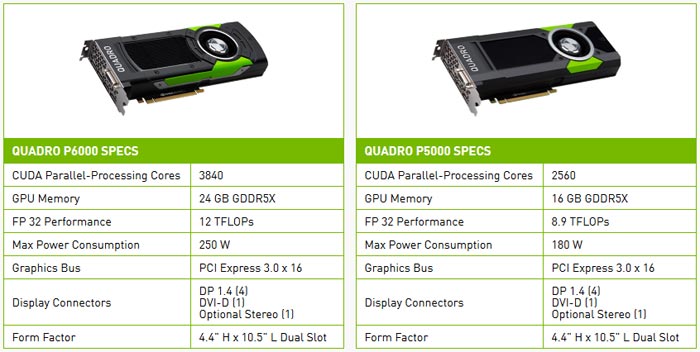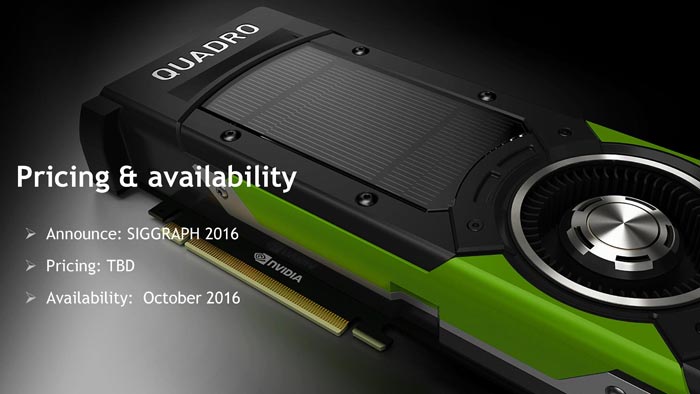In more news out of the currently running SIGGRAPH 2016 conference, Nvidia has launched a pair of new Quadro Pascal professional graphics cards. There's the flagship Quadro P6000 with 3,840 CUDA cores, 12 TFlops of compute power, and 24GB of GDDRX memory, and the P5000 with 2,560 CUDA cores, 8.9 TFlops of compute power, and 16GB of GDDRX memory. Nvidia claims the new Quadro Pascal platform provides the most powerful workstation GPU, plus software capabilities for artists and designers. In particular the P6000 is claimed to deliver "up to 80 per cent faster performance over the previous generation (VR benchmark)".

Only last week Nvidia launched the Pascal-based TITAN X with 12GB of GDDR5X RAM, which it claimed to be "The Ultimate" graphics card, providing "11 TFlops of brute force". Sadly its reign appears to have been very short lived with the new FP32 (single-precision floating point) 12 TFlops Quadro P6000 launch. Nvidia has provided specification tables for the Quadro P6000 and P5000 but missed out some key details such as core clock speeds. Please look below for that reference table.

Talking up the new Quadro P graphics cards, Steve May, CTO at PIXAR said "Often our artists are working with 50GB or higher datasets. The ability to visualize scenes of this size interactively gives our artists the ability to make creative decisions more quickly." May added that he expects benefits of the new Quadro P range to be "huge" in practice.

As mentioned in the intro, these Quadro cards are designed for professionals working on tasks such as animation, as well as architectural drawings and rendering, engineering, and medicine. Availability of the cards is expected for October and pricing will be in line with what the previous gen cards launched at, so expect to pay about $5000+ for a Quadro P6000, and $2000+ for the P5000.














